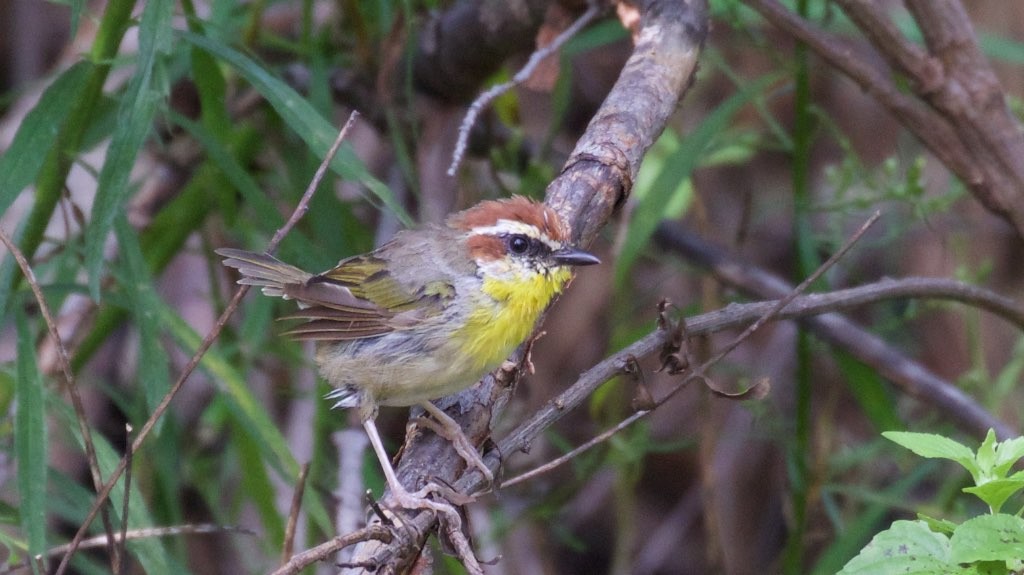Rufous-capped Warbler
A species of Basileuterine Warblers Scientific name : Basileuterus rufifrons Genus : Basileuterine Warblers
Rufous-capped Warbler, A species of Basileuterine Warblers
Botanical name: Basileuterus rufifrons
Genus: Basileuterine Warblers
Content
Description General Info
Description
The rufous-capped warbler (Basileuterus rufifrons) is a New World warbler native from Mexico south to much of Central America, rarely occurring as far north as southeastern Arizona and south Texas. Rufous-capped warblers generally reach a length of about 12.7 cm (5.0 in). They are plain-olive to olive-gray, with white underbellies, bright yellow chests and throats, and a distinctive facial pattern consisting of a rufous cap, a white eyebrow-line (or superciliary), a dark eye-line fading into a rufous cheek, and a white malar marking. The bill is rather stout for a warbler, the wings are round and stubby, and the tail is long, often raised at a high angle and flicked. While rufous-capped warblers are generally birds of tropical shrubby highlands, North American sightings tend to be in oak woodland canyon bottoms, near running water, while the birds stay low in dense vegetation. The courtship song of the rufous-capped warbler is a rapid, accelerating series of chipping notes (chit-chit-chit-chitchitchit), somewhat reminiscent of the rufous-crowned sparrow, while the call note is a hard chik or tsik, often repeated. Like other New World warblers, this species does not actually warble. Male rufous‐capped warblers have complex songs with many syllable types shared both within and between males’ repertoires. The males also show seasonal, temporal and annual variation in their song use. Rufous-capped warblers primarily feed on insects and spiders, foraging through dense brush and scanning close to the ground for movement. They are not generally known to flycatch from perches. Birds in the southern part of the range are by some authors split out as a separate species, as the chestnut-capped warbler (Basileuterus delattrii). 
Size
13-14 cm (5-5.5 in)
Nest Placement
Shrub
Feeding Habits
Rufous-capped Warbler primarily consumes insects and invertebrates, supplementing with berries. It forages actively, often near the ground, exhibiting a preference for particular food types based on availability. Notable adaptations include agile maneuvering in dense vegetation for hunting.
Habitat
Rufous-capped Warbler is typically found in a variety of habitats ranging from scrub and brushy ravines to open woodlands and young second growth. It also occupies forest edges, coffee plantations, and wooded areas, with a notable preference for tropical dry forest environments. Geographically, its habitat extends across regions with elevation ranges from the lowlands up to 2,500 meters and, in some places, even reaches 3,000 meters.
Dite type
Insectivorous
General Info
Feeding Habits
Bird food type
Bird Feeder Type

Platform
Species Status
Not globally threatened.
Scientific Classification
Phylum
Chordates Class
Birds Order
Perching birds Family
New world warblers Genus
Basileuterine Warblers Species
Rufous-capped Warbler 